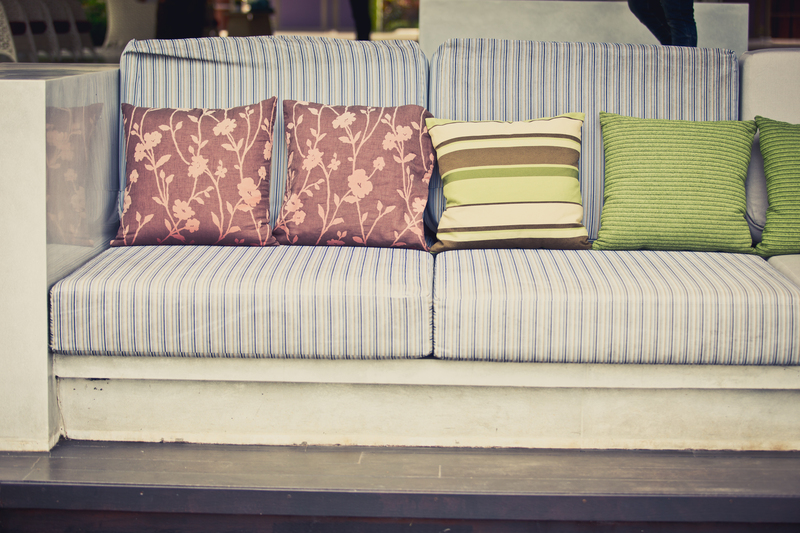Giving Old Kitchenware a New Purpose Through Recycling and Disposal
Do you have outdated pots, cracked cups, or rusty utensils cluttering your cabinets? Recycling and disposing of old kitchenware is not only great for spring cleaning--it's an essential part of sustainable living. More people than ever are realizing that repurposing kitchen tools and tableware can transform waste into wonder. In this comprehensive article, we'll explore creative, responsible, and eco-friendly ways to give new life to your unwanted kitchen items.

Why Should You Recycle or Repurpose Old Kitchenware?
Many households accumulate faded plates, chipped mugs, or mismatched silverware. Instead of letting them take up precious space or tossing them in the trash, you can make a positive environmental impact. Here's why recycling and reusing kitchenware matters:
- Reduces landfill waste: Millions of dishes, pots, and pans end up in landfills each year. Repurposing or recycling helps reduce this burden.
- Conserves resources: Manufacturing new kitchenware requires raw materials and energy. Reusing or recycling old items saves valuable resources.
- Supports creative expression: Upcycling kitchenware into decor, storage, or garden tools unleashes your creativity.
- Saves money: Reworking and extending the life of utensils means fewer purchases for your household.
- Promotes community: Donating usable items supports local charities and families in need.
What Types of Kitchenware Can Be Recycled or Repurposed?
Not all kitchen items are created equal. Some materials lend themselves better to recycling or upcycling. Here's how the main categories break down:
Glassware
- Drinking glasses
- Mason jars
- Baking dishes
- Measuring cups
Glass is infinitely recyclable, but some specialty glass--like Pyrex and tempered glass--needs special treatment due to its high melting point.
Ceramics and Porcelain
- Plates
- Cups
- Bowls
- Bakeware
Ceramics are not recyclable with standard glass but can be used creatively in gardens or as mosaic art.
Metal Cookware and Utensils
- Pots and pans
- Cutlery
- Utensil sets
Most metals--including stainless steel and aluminum--are highly recyclable if separated properly.
Plastic Kitchenware
- Storage containers
- Utensils
- Mixing bowls
Check local recycling codes. Some plastics (like #5 polypropylene) are widely accepted, while others may need to be repurposed at home.
How to Recycle Old Kitchenware Responsibly
The key to kitchenware recycling is to know your local regulations and prepare your items correctly. Here's a step-by-step guide to responsible disposal:
1. Sort by Material Type
Group all items into glass, ceramic, metal, and plastic. This simplifies recycling and helps identify what can be repurposed.
2. Inspect for Contamination
Remove food residue and non-recyclable attachments such as rubber handles or wood accents. Items must be clean for most recycling programs.
3. Research Local Recycling Guidelines
Not every municipality recycles kitchenware the same way. Some collect metals curbside, while others require drop-off at specific facilities. Check websites or call your local waste management office.
4. Use Scrap Yards for Metal Cookware
Metal pots, pans, and cutlery are best dropped off at scrap metal centers. Many of these facilities even pay for your recyclable items.
5. Consider Specialized Glass Programs
While bottles and jars are mainstream recyclables, items like Pyrex or oven-safe glass often go to special collection. You can also use broken ceramics and glass for mosaic or landscaping projects instead.
6. Donate Usable Items
If your kitchen tools are in decent shape, local shelters, thrift stores, or community kitchens may accept donations--extending the life of your kitchenware while helping those in need.
Repurposing Old Kitchenware: Creative Upcycling Ideas
Giving old kitchenware a new purpose through creative recycling or upcycling offers endless possibilities, adding charm to your home and reducing waste.
1. Transform Old Mugs into Planters
Even chipped or handle-less mugs are perfect as quaint plant pots. Simply add rocks, soil, and your favorite succulent!
2. Make Wind Chimes from Cutlery
Attach old spoons and forks to a wooden ring with fishing line. When the breeze blows, you'll enjoy lovely, tinkling music.
3. Turn Baking Sheets into Magnetic Boards
Paint and hang a metal baking sheet on the wall as a stylish, functional memo board for your kitchen or home office.
4. Use Bowls as Jewelry Catchalls
Place decorative old bowls on your dresser or nightstand to store rings, earrings, or loose change--reducing clutter in every room.
5. Create Mosaic Tabletops from Broken Plates
Break up chipped or cracked plates and affix the pieces to a table or stepping stones for a colorful, custom look in your garden or patio.
6. Build Bird Feeders from Teacups
Attach a teacup and saucer together, hang them with bright ribbon, and enjoy watching birds flock to your yard.
7. Turn Jars into Lanterns or Storage Containers
Old jars can be upcycled into attractive lanterns with candles, or reimagined as organizers for pantry staples, crafts, or office supplies.
Safe and Effective Kitchenware Disposal Methods
Not all kitchenware is fit for repurposing or standard recycling. For items that have reached the absolute end of their lifespan--think non-stick pans with worn coatings or plastics with toxic residues--it's crucial to dispose of them responsibly:
- Contact your local hazardous waste program for Teflon pans and chemically treated kitchenware.
- Break and bag sharp glass or ceramics securely before placing in the trash to avoid injuring sanitation workers.
- Separate reusable parts from non-recyclable elements (for example, removing plastic handles from metal pans).
Manufacturer Take-Back Programs
Some brands offer take-back or recycling programs for their old products. For instance, certain cookware companies accept used pans for recycling and may even offer a discount for your next purchase. Always check with the manufacturer before discarding.
Community Collection Events
Many towns hold collection days for hard-to-recycle materials, including kitchen gadgets and cookware. This is a perfect time to responsibly unload old appliances and specialty kitchenware.
Environmentally Friendly Kitchenware Purchases for the Future
After decluttering, consider investing in eco-friendly, durable kitchen tools:
- Choose stainless steel, bamboo, or glass over disposable plastic.
- Buy modular items that have replaceable parts (e.g., handles or lids).
- Look for products labeled "cradle to cradle" or "100% recyclable".
Supporting sustainable kitchenware brands makes it easier to close the recycling loop and keep your kitchen as green as possible.

Frequently Asked Questions About Old Kitchenware Recycling and Upcycling
Can all types of kitchenware be recycled?
Not always. Metals are commonly recycled, while ceramics and tempered glass often are not. Always check with local facilities.
Where can I donate usable old kitchenware?
Community organizations, thrift stores, soup kitchens, and shelters often accept gently used kitchen tools and dishes.
How can I safely dispose of cracked or broken glassware?
Wrap sharp pieces in newspaper, seal them in a sturdy bag or box, and label as sharp before discarding to prevent injury.
What's the best way to repurpose a single, odd utensil?
Get creative--use as a plant marker, paint it for wall art, or attach to wind chimes for a custom decoration.
Conclusion: Transforming Your Kitchen's Past into a Greener Future
Giving old kitchenware a new purpose through recycling and disposal is one of the simplest ways to minimize your environmental footprint, support your community, and refresh your home. Whether you choose to upcycle, donate, or recycle your culinary leftovers, each step extends the lifecycle of household goods and conserves essential resources.
Ready to begin? Start by sorting through your cabinets. With a little creativity and a commitment to sustainable living, you'll discover that even the oldest kitchenware can play a starring role in your eco-friendly kitchen story.
